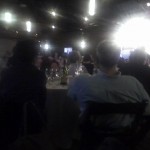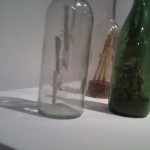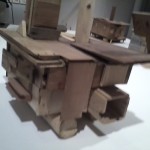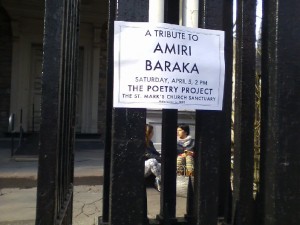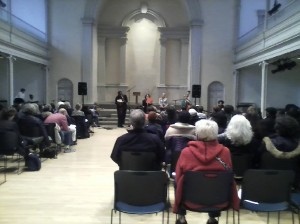On Monday evening I was able to join many poets and poetry enthusiasts for the annual Poets House Gala that follows the Bridgewalk. I was one of the featured poets in the late 1990s so I feel as if I am part of a very special group of poets to have read work on the Brooklyn Bridge. Lee Bricetti and her staff (Stephen Motika, Jane Preston, Reginald Harris, Krista Manrique, and several others) make what I know is a massive endeavor look very easy. Got there just as Mark Doty launched into “Crossing Brooklyn Ferry”, Whitman’s poem that Galway Kinnell read each year until he could no longer join the proceedings–he is missed of course and I know he was sending good vibes to the audience and to Mark. The high point of the evening was the winner of the Poetry Out loud National Recitation Contest Anita Norman’s recitation of a Stanley Kunitz poem. She worked that poem in front of an audience that a) knew the poem well and b) knew Stanley. The ovation she received was well deserved. But this is when things gets strange–Norman. I went over to speak with her and her father and found that he is the son of one of my former classmates and his grandfather was my elementary school principal. Poets are connected in all kinds of ways. Thom Lux and Vijay Seshadri also read well and Naomi Shahib Nye’s acceptance speech for the Elizabeth Kray award was tender and full of humor. Great to Laureanne Bosselaar, Ira Silverberg, Dave Johnson, Kevin Young, Cornelius Eady and Sarah Micklem, Hettie Jones-I could go and on. Poets House is important to poetry, to New York City, indeed to the globe. www.poetshouse.org.
This past Sunday, Pentecostal Sunday, I left church and got on the subway from Brooklyn to Harlem to meet with Holly Hughes BFA students who are getting an immersion into NYC arts. It is always interesting to meet students of the arts. They ask interesting questions. They see things differently or they walk lockstep w/ whatever trends there are. It is always tricky to look at, critique and create culture. So they were there to see Carrie Mae Weems Museum Series, a group of large scale photographs there were not hung at the Guggenheim during her retrospective. They should have been at the Guggenheim.
But also there is a terrific show When the Stars Began to Fall http://www.studiomuseum.org/exhibition/when-the-stars-begin-fall-imagination-and-the-american-south which is up until the end of June. As a Southerner who has lived Up North for decades, I am also pleased when Black artists from the South or artists interested in the South are exhibited. I really enjoyed the David Hammons piece which consists of several bottles in which he has created pieces representing his take on the Delta-here it is lightning in the bottle. Lightning bolts are common –given the quick and harrowing thunderstorms that arise in the Delta so to see them is in a bottle (contained, yet powerful) makes me smile.
And while the Weems display is very powerful as her black clad figure stands in front of museums from the Pergamon in Berlin to Project Row House in Houston–that one is odd as it is modest,new and in a part of Houston that remains stubbornly proudly Black, I was also pleased to see the work of Beverly Buchanan. Ms. Buchanan has been creating sculptures that mimic, deconstruct, examine Southern vernacular architecture. Her father was a Agri agent and she used to join him on his rounds and so saw many farm houses throughout North Carolina. Years ago, I saw her work and was inspired to write “Shack with Vines” one of the poems in “Why I Left the Country” suite. There was something about the shack’s fragility and its necessity that she was able to convey. Her more recent works are more deconstructed, but they are made of materials that are fragile. She continues to explore how for many shelter is makeshift, modest and can at any moment be blown away or burned down. At any moment.
